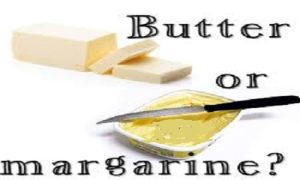Introduction :
Margarine was created around 1860 by a French chemist. Before World War II, Korea was used by the public. But in the late 1950s, margarine gradually replaced it. Today, for example, in America, many people have abandoned the use of butter and only use margarine made from vegetable fat. But of course, it should be noted that people have wrong information about this. Contrary to what is thought, margarine is not low in energy.
In fact, it is as energizing as butter, and each tablespoon of it has 100 calories of energy. Of course, there is a difference in this case, and that is that butter has more saturated fat, and as a result, it causes blood cholesterol to rise. But margarine is usually made from unsaturated vegetable oils such as canola oil, corn oil, sunflower oil, etc., and they hydrogenate it for more consistency.
Definition of margarine:
Margarine is a product obtained from a water-in-fat emulsion, in which the water phase is made up of non-fat milk and the fat phase is made up of non-fat milk oils. The two phases of water and fat are mixed with the help of suitable emulsifiers and create a stable emulsion that is placed in the process of producing margarine and the resulting processing has a suitable and desired consistency like butter. In Iran, margarine has been wrongly known as vegetable butter. In international culture, it is called the substances made from vegetable oils and has a separate definition of butter.
Margarine is about 200 years old and beta-carotene is used as a coloring additive in the preparation of margarine.
Vitamin E, A margarine is more than butter. Also, margarine does not contain iron, zinc and copper. Because it is made from vegetable oils, the price of margarine is low

Margarine selection factors and criteria:
:: plasticity or malleability
:: Shortening number
:: behavior of fat when melting
:: speed of crystallization or crystallization
:: power of poking and creating crispness in the product
:: Features of emulsification
:: Fat smoke point (more about fats used for frying)
:: The taste and aroma of fat
:: Duration of storage and its effect on postponing staleness
:: The power of creating an isolation layer in the dough in order to maintain gas and more porosity in the product
Types of margarine:
It should be noted that the softer the margarine, the lower the amount of saturated fat and trans fatty acid. But the types of margarine are:
Soft diet: it should never be used instead of ordinary butter or margarine in bakery products.
Soft: This type of margarine is less hydrogenated than normal margarine and is easily spread on bread even if it is fresh from the refrigerator. Completely soft margarine: This margarine is as smooth as ketchup and has as much fat as normal margarine.
Normal: It is a mixture of refined and saturated vegetable oils to which a small amount of preservatives, milk, non-fat dry milk and water have been added.
Classification of margarine in the baking industry based on the margarine used:
:: Semi-fatty
:: With elasticity
:: Confectionery industries
:: For cakes and relatively loose and soft doughs
:: For the preparation of creams
:: M or fats for frying
::diet

Margarine production line:
The main machines in a margarine production line are as follows:
1- Storage tank
2- Neutralization
3- Color removal
4- Hydrogenation
5- Deodorization
6- Mixing
7- Emulsion formation
8- Cooling and forming the dough
9- Shaping and packaging
